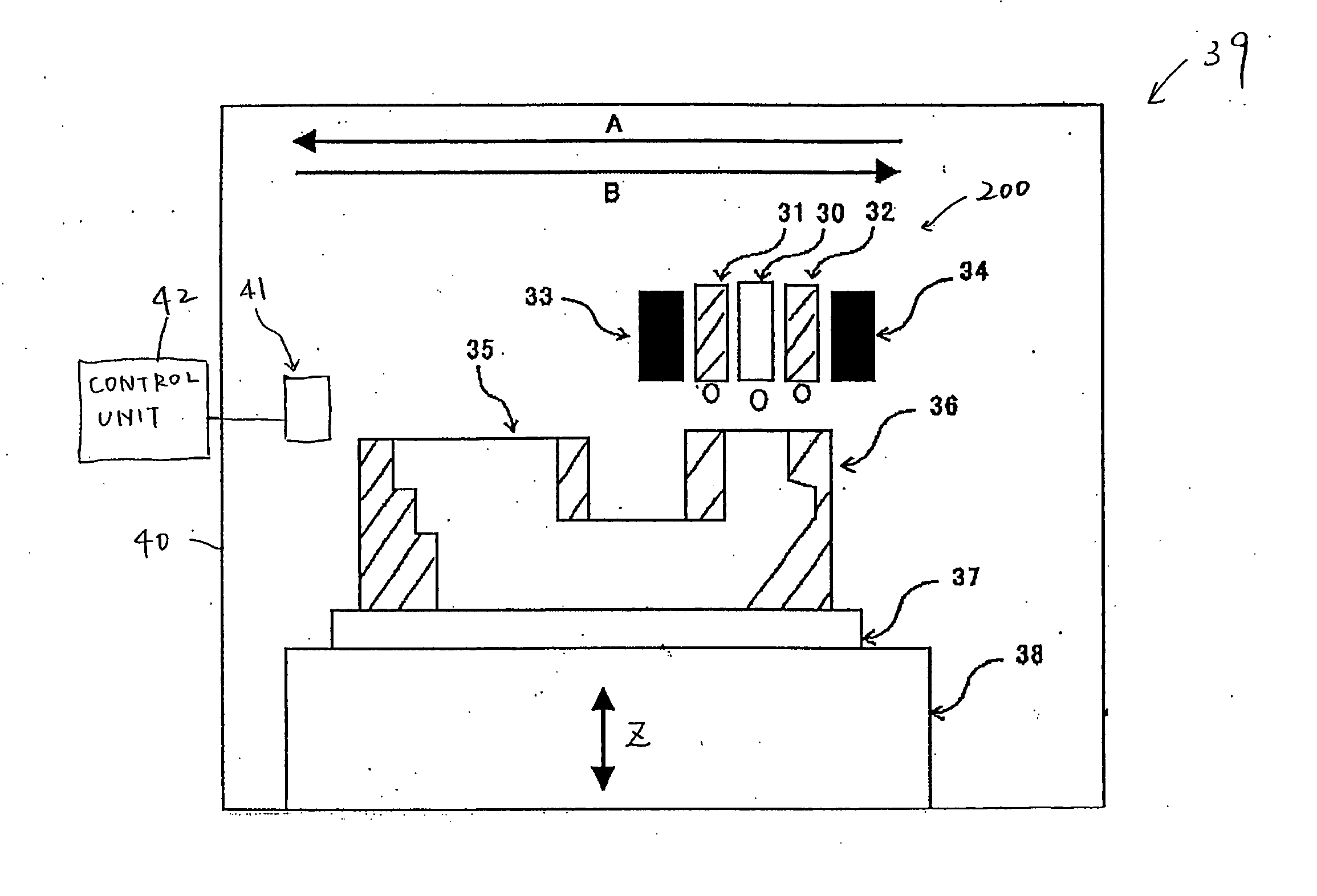Three-dimensional laminating molding device
- Summary
- Abstract
- Description
- Claims
- Application Information
AI Technical Summary
Problems solved by technology
Method used
Image
Examples
experiment 1
[0062] Experiment 1
[0063] A total of 300 g containing 10 parts by weight of urethane acrylate (trade name: DIABEAM UK6038, available from Mitsubishi Rayon Co., Ltd.) and 90 parts by weight of neopentyl glycol hydroxypivalate ester di(meth)acrylate (trade name: KAYARAD MANDA, available from Nippon Kayaku Co., Ltd.) as a mold material, 3 parts by weight of a photo-polymerization initiator (trade name: IRGACURE 1700, available from Ciba Specialty Chemicals), and 2 parts by weight of a blue pigment (trade name: Lionel Blue 7400G, available from TOYO INK MFG. CO., LTD.) as a colorant was dispersed until a uniform mixture was obtained using a homogenizer (trade name: HG30, manufactured by Hitachi Koki Co., Ltd.) at a stirring speed of 2,000 rpm. Successively, the resultant mixture was passed through a filter to remove impurities or the like, thereby obtaining a uniform ink composition for mold. The viscosity of the ink was 9.5 mPa.multidot.s, and the surface tension of the ink was 32.5 mN...
experiment 2
[0066] Experiment 2
[0067] Using the same mold material and support material as that used in the experiment 1, a mold was produced while controlling the inner temperature of the molding device 39A to 70.degree. C. and curing the mold material by irradiating the mold material with 250 mJ / cm.sup.2 of light using the ultraviolet-ray irradiation devices 33, 34 (SP5-250 DB, manufactured by Ushio Inc.). The formed mold had no warp or partial deformation, and had a smooth surface.
experiment 3
[0068] Experiment 3
[0069] Using the same mold material and support material as that used in the experiment 1, a mold was formed while controlling the inner temperature of the molding device 39A to 45.degree. C. and curing the mold material by irradiating the mold material with 350 mJ / cm.sup.2 of light using the ultraviolet-ray irradiation devices 33, 34 (SP5-250 DB, manufactured by Ushio Inc.). The formed mold had no warp or partial deformation. However, the surface slightly lacked smoothness.
PUM
| Property | Measurement | Unit |
|---|---|---|
| Temperature | aaaaa | aaaaa |
| Color | aaaaa | aaaaa |
| Melting point | aaaaa | aaaaa |
Abstract
Description
Claims
Application Information
 Login to View More
Login to View More - R&D
- Intellectual Property
- Life Sciences
- Materials
- Tech Scout
- Unparalleled Data Quality
- Higher Quality Content
- 60% Fewer Hallucinations
Browse by: Latest US Patents, China's latest patents, Technical Efficacy Thesaurus, Application Domain, Technology Topic, Popular Technical Reports.
© 2025 PatSnap. All rights reserved.Legal|Privacy policy|Modern Slavery Act Transparency Statement|Sitemap|About US| Contact US: help@patsnap.com



